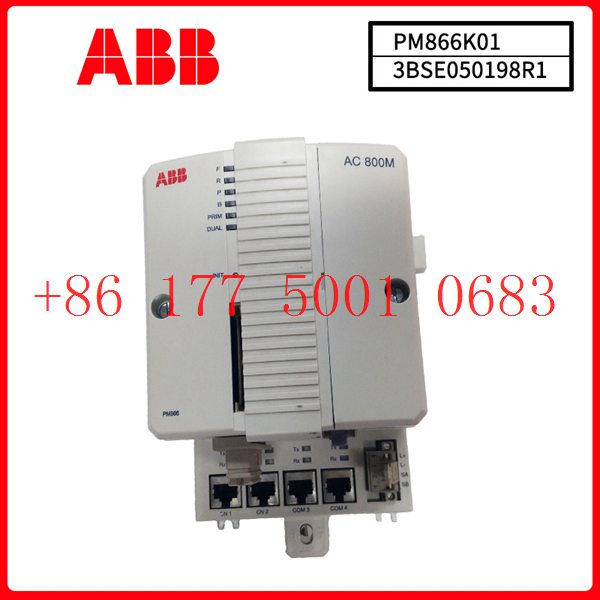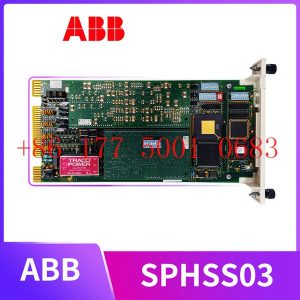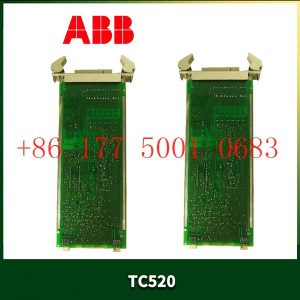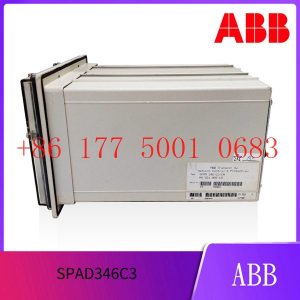Description
hardware flow control. It is an ideal choice in the field of industrial automation.
Implementation of communication between ABC industrial robot and PLC based on DeviceNet fieldbus technology
introduction
In modern production systems, industrial robots and PLCs need to communicate and collaborate to complete production tasks. That is, the
industrial robots output signals to the PLC, allowing the PLC to control related equipment to drive the robot”s front-end tools. This article
mainly analyzes the communication problems between ABB industrial robots and PLC based on DeviceNet fieldbus technology.
DeviceNet is a common network communication method in the field of automation. ABB industrial robots establish a network to communicate with
Siemens PLC based on the DeviceNet network.
1Configure DSQC652
There are mainly 5 types of standard I/0 boards commonly used in ABB industrial robots [2]. Except for the different addresses assigned to
them during setup, their configuration methods are basically the same. This article mainly analyzes the ABB standard I/0 board DS0C652, which
mainly builds communication modules based on the DeviceNet network. The DS0C652 board has a distributed I/O module with 16 digital input and 16
digital output interfaces. The board is installed in the ABB industrial robot control cabinet. First, define the specific operation steps of the DS0C652 board,
enter the teach pendant control panel, then enter the configuration menu (Figure 1), select the DeviceNetDevice menu, and add a template to enter Figure 2.
ABB standard I/0 board is hung on the DeviceNet
network, so the address of the module in the network must be set. The jumpers 6 to 12 of terminal x5 are used to determine the address of the module.
The available address range is 10 to 63. Modify the parameters in the template parameters to complete the DS0C652 board settings. Click the drop-down
menu to select the “Use value from template” row, select
“DS0C65224VDCI/0Device”, and then the parameters that need to be set include the address of the I/0 board in the bus.
Figure 1 Configuring DSQC652
2Configure signals and parameters
After completing the DS0C652 board setting, the I/0 signal setting will be performed. Setting the I/0 signal is the basis for establishing communication with
the PLC. The PLC communicates and transmits data with the ABB industrial robot through the I/0 signal and the DS0C652 board. As shown in Figure 3, in the
signal configuration interface, there are many default I/0 points after the system is established. Modification is not allowed. Click “Add” to add signals. When setting
input and output signals, their address range is 0~15. First, enter the signal menu in the configuration options to set the input and output types, and modify the corresponding parameters.
After completing the settings, the computer prompts that you need to restart the settings. If there are multiple signals that need to be defined and the waiting time
is long after restarting multiple times, you can click “Cancel” and wait for all signals to be defined before clicking the “Yes” button to restart. After the signal settings are
completed, click to select “Input and Output” in the ABB menu to check whether all signals have been set.
Figure 2 Configure DSQC652 parameters
Figure 3 Signal parameter settings
During the signal establishment process, attention should be paid to the DSoC652 port and PLC port addresses used, and the corresponding address table should be
established, as shown in Table 1. The robot interacts with the PLC through I/O signals. During the setting process, there must be no errors in the port and address number
of the PLC connected to the DSoC652. If the address is set incorrectly, the communication between the robot and the PLC will not work properly.
The entire robot teaching pendant setting process is shown in Figure 4.
https://www.xmamazon.com
https://www.xmamazon.com
https://www.plcdcs.com/
www.module-plc.com/
https://www.ymgk.com
JRCS SMS-U950 FSCU UNIT
JOTRON PHONTECH MPA-1601A-01165 CONTROL UNIT
JASTRAM ENGINEERING SA-70-037-11-AP-66 ALARM CONTROL PANEL
INELTEH ITCS-2 CONTROL UNIT
HYUNJIN TYPE-LSC-01-0308 CONTROLLER MODULE
HYUNDAI MSU-113N HEEM-2 MOTOR CONTROL UNIT
HYUNDAI HEAVY INDUSTRIES ACONIS-PMS CONTROL PANEL
HYUNDAI HEAVY INDUSTRIES ACONICS-PMS 15-030521-06 CONTROL PANEL
HYOMYUNG ENGINEERING MODEL-LSC-CP100 CONTROL UNIT
HWASAN PCU-24M ALPHA LUBRICATORS UPS CONTROL BOARD
HRP AU-12M CONTROL PANEL
HEINZMANN SW-09-URI ENGINE-&-TURBINE CONTROLS UNIT
HEINZMANN DIGITAL THESEUS DGM-02-EXTENDED CONTROL PANEL
HEINZMANN DIGITAL CONTROL DC-9-SW-00.00.04 DIGITAL CONTROL PANEL
HEINZMANN DC1801-04-DF-625-06-014-00 CONTROL PANEL
HEINZMANN DC-901-03-C-BASIC-SYSTEM-E-625-00-004-00 ENGINE & TURBINE CONTROLS
HARTMANN & BRAUN F-250 UNIT
GE ENERGY IGT-3044-20-01-A0348860 POWER CONVERSION PROPULSION CONTROL PANEL
ENGTEK TELMAC-III CONTROL PANEL
ENDA EOP41-070ET OPERATOR PANEL
ELEKTRONIKON ATLAS COPCO 1900070124 CONTROLLER PANEL
ECOAIR K-30972.01-0994 WERK WOLFRATSHAUSEN ELECTRONIC-CONTROL
DMT DSG-822-C4338 DIESEL CONTROL UNIT
DEUTA WERKE BWS2-MYA CONTROL MODULE
DEUTA WERKE BW2-MYV CONTROL MODULE
DETROIT DIESEL ELECTRONIC CONTROLS DDEC-III-R23518743 ENGINE CONTROL MODULE-ECM
DETROIT DIESEL ELECTRONIC CONTROLS 6DD4308E06 DDEC IV ECM
DEIF MULTI-LINE MDR-2 MULTI DIFFERENTIAL RELAY UNIT
DEIF MALLING TYPE-827.4 MAIN LIGHTS CONTROL PANEL
DEIF MALLING TYPE-827-411 SIGNAL LIGHTS CONTROL PANEL
DAMCOS PD-640-BASE-MODULE-1112 CONTROL MODULE
DAMCOS PD-622-BASE-MODULE-1121 CONTROL MODULE
DAMCOS PD-621-BASE-MODULE-1116 CONTROL MODULE
DAMCOS PD-602-BASE-MODULE-1101 CONTROL MODULE
ABB XVC769AE101
ABB 3BHE006373R0101
ABB 3BHE006373R0101 XVC769AE101
DAMCOS PD-600M-BASE-MODULE-1102 CONTROL MODULE
CUMMINS ENGINE CONTINENTAL-CM2150E ENGINE CONTROL UNIT
CMR MSS2U CODE-9254408 CONTROLE MESURE REGULATION
CALLENBERG SYMAP G CONTROL DEVICE
BURR-BROWN BB-TM2500 DISPLAY CONTROL PANEL
BRIDGEMATE COMPACT-OS-MT500029-C336 COMPACT OPERATOR STATION
BASLER ELECTRIC MOC2499 MOTOR OPERATED CONTROL POTENTIOMETER
AUTRONICA KMA-300 ANALOGUE IN MODULE
AUTRONICA AK-6 SHORT-CIRCUIT PROTECTOR
AUTRONICA AK-35-4 315MA GENERATOR GUARD







Reviews
There are no reviews yet.